UMass Extension's Landscape Message is an educational newsletter intended to inform and guide Massachusetts Green Industry professionals in the management of our collective landscape. Detailed reports from scouts and Extension specialists on growing conditions, pest activity, and cultural practices for the management of woody ornamentals, trees, and turf are regular features. The following issue has been updated to provide timely management information and the latest regional news and environmental data.
The Landscape Message will be updated once a month in October, November and December. The next message will be posted on December 3. To receive immediate notification when the next Landscape Message update is posted, be sure to join our e-mail list
To read individual sections of the message, click on the section headings below to expand the content:
Scouting Information by Region
Environmental Data
The following data was collected on or about November 3, 2021. Total accumulated growing degree days (GDD) represent the heating units above a 50° F baseline temperature collected via regional NEWA stations (http://newa.cornell.edu) for the 2021 calendar year. This information is intended for use as a guide for monitoring the developmental stages of pests in your location and planning management strategies accordingly.
|
MA Region/Location |
GDD |
Soil Temp |
Precipitation |
Time/Date of Readings |
||
|
4-Week Gain |
2021 Total |
Sun |
Shade |
|||
|
CAPE |
295 |
3047 |
53 |
52 |
7.73 |
12:00 PM 11/03 |
|
SOUTHEAST |
270 |
3040.5 |
58 |
51 |
6.25 |
3:00 PM 11/03 |
|
NORTH SHORE |
255 |
3090 |
53 |
52 |
4.19 |
10:30 AM 11/01 |
|
EAST |
258 |
3125 |
56 |
49 |
5.11 |
4:00 PM 11/03 |
|
METRO |
216 |
2889 |
46 |
45 |
3.81 |
6:00 AM 11/03 |
|
CENTRAL |
221 |
2965 |
48 |
47 |
6.85 |
7:00 AM 11/03 |
|
PIONEER VALLEY |
223.5 |
3008 |
54 |
53 |
3.63 |
12:00 PM 10/31 |
|
BERKSHIRES |
153 |
2454 |
52 |
46 |
7.71 |
8:45 AM 11/03 |
|
AVERAGE |
236 |
2952 |
53 |
49 |
5.66 |
_ |
n/a = information not available
Regional Notes
Cape Cod Region (Barnstable)
General Conditions: The major event for the period was the nor’easter on Wednesday, October 27. The storm caused widespread tree damage resulting in 155,000 customers without electricity, i.e. 77% of all customers on the Cape. Power outages and road closures lingered for days and in some places well into the weekend. Top wind gusts of 80+ mph were recorded in many towns across the Cape. Tree damage and failures were extensive and cleanup will likely last months. The average temperature for the period from Sept. 29 thru Nov. 3 was 58˚F with a high of 77˚F on October 21 and a low of 36˚F on November 2. The conditions have been mild and warmer than usual. A freeze has not occurred as of Nov. 3. The first frost was Nov. 4, primarily in the upper Cape region. Soil temperatures have remained above 60˚F for much of the period with soil temperatures now remaining in the 50s. Moisture has been plentiful; more than 7.5 inches have been recorded at the weather station in Barnstable. Significant precipitation events include October 4 (~ 2.5”) and October 25, 26, & 27 (~ 3” total).
The mild temperatures and ample moisture have resulted in long lasting blooms for many annuals including dahlias, marigolds, and calendula. Sporadic blooms are still visible on some herbaceous plants such as Russian sage, fringed bleeding heart, hardy hibiscus, and ‘Sheffield Pink’ chrysanthemum is just past full bloom. Woody plants seen in bloom during the period include butterfly bush, St. John’s wort ‘Hidcote’, autumn clematis. A couple mistimed blooms have been seen on azalea, rhododendron, and ‘Ogon’ spiraea. Lawns continue to grow vigorously. The Nor’easter did take some of the early fall color off but some color can still be seen on maple, sweet gum and tupelo. As usual, oaks are still hanging on to their leaves, mostly still green, despite the Nor’easter.
Pests/Problems: Insect pests or damage seen during the period include white grubs in lawns, cutworms in lawns, caterpillar damage on annuals (cabbage looper), lacebugs on PJM rhododendron and andromeda, white prunicola scale on lilac and black turpentine beetle damage on pitch pine. Numerous inquiries about Asian jumping worms have come in. Disease symptoms or signs observed during the period include powdery mildew on herbaceous and woody species. Trees susceptible to foliar pathogens, such as crabapples, have long been defoliated. Mushrooms and conks have been abundant.
Southeast Region (Dighton)
General Conditions: “As long as autumn lasts, I shall not have hands, canvas and colors enough to paint the beautiful things I see.” - Vincent van Gogh. Up until a series of extremely violent storms, this had been one of the best fall foliage seasons I can recall. An epic nor’easter changed all that, knocking down trees and interrupting electrical service to thousands of local homes. At the peak of the storm there was a sound as if a freight train were barrelling through the trees above while the house shook and seemed to threaten jumping from its foundation as if in fright. Distribution cut-out fuses flashed, reset and flashed again, and blue green arcs were visible on the hillsides. I would have been only half surprised to see a witch on a broomstick riding through. While there are still plenty of trees in full leaf, it's not quite as dramatic a scene as it once was. Ash and native maples are mostly finished. The oaks are still holding on. We're waiting on the first frost and seeing here and there a few mistimed flowers. Notably, Japanese Knotweed is still flowering. Lawns are green, some gorgeous. Honestly, if you haven't been able to have decent lawns this past year then I don't know what to tell you.
Pests/Problems: Home invaders are an issue. White-footed mice, leaf footed seedbugs and Asiatic ladybugs are all searching desperately for winter quarters. (See Insect section below.)
North Shore (Beverly)
General Conditions: The first half of October was unseasonably warm and the rest of the month was also unusually mild. Temperatures were quite variable throughout the month of October. The average daily temperature for the month was 57˚F, with the maximum temperature of 76˚F recorded for two days, October 13 and 16, and the minimum temperature of 36˚F recorded on October 29, 2021. Because of the unseasonably mild temperatures through the month, we did not record any frost during the month of October. Most years we have typically experienced the first frost of the season in October. The area experienced some days of heavy rains and strong winds. The strongest storm came through on October 26 with heavy rain and strong winds. After the storm there was a lot of woody debris from broken twigs but there was no major damage to trees in the area. A total of approximately 4.19 inches of rainfall was received at Long Hill during the month of October. Because of the unseasonably warm September and mild early October, foliage color and leaf fall was delayed. Fall foliage color continues in the landscape with mainly yellows, oranges and reds despite many leaves falling. The few plants seen in bloom include: redbud hazel (Disanthus cercidifolius), American witch hazel (Hamamelis virginiana), Burkwood Daphne (Daphne x burkwoodii) and ‘Sheffield pink’ chrysanthemum (aka Dendranthema). Colorful fruiting plants such as hardy orange (Poncirus trifoliata), beautyberry (Callicarpa americana), Wright viburnum (Viburnum wrightii) and winterberry (Ilex verticillata) are also providing color in the landscape with their fruits.
Pests/Problems: Poison ivy (Toxicodendron radicans) and burning bush (Euonymus alatus) are displaying fall foliage color in the woods. Ticks are still active and will remain active anytime the temperature is above freezing. Take precautions when raking leaves. Conduct tick checks after working outdoors. Use repellents containing DEET on skin and permethrin on clothing to protect yourself. Mosquito populations are mostly done for the year.
East Region (Boston)
General Conditions: We had an unceremonious end to the growing season, as of November 3 we have yet to receive our first frost. October was the fourth warmest on record. October 19 was the first morning with temperatures below 50ºF. The drawn-out leaf season continues with varying degrees of color and an unusual amount of foliage remaining in the canopy. We received 5.11 inches of precipitation in October, the majority from two rain events, while experiencing 14 days mid-month with no significant precipitation. Lawns are lush and green and soils are adequately moist.
Pests/Problems: A nor’easter blew through the area on October 25 and 26, delivering 1.83 inches of rain and strong winds. There was significant storm damage increased by the fact that many trees still held foliage. An unusually heavy seasonal leaf drop has been observed on white pine and arborvitae.
Metro West (Acton)
General Conditions: Mild, if not warm weather persisted into the month of October. A high of 77°F was recorded on the 14th and a low of 30°F was recorded on the 29th. There were twelve additional days scattered throughout the month with temperatures recorded in the 70s. The average monthly precipitation for October is 4.32” and the total measured for the month was 3.81”. The first hard and killing frost was recorded on the morning of October 29th, but a lighter and first frost of the season was recorded on October 24th. By far, the most notable weather event for the month was the nor’easter, occurring on the 27th and 28th, that thankfully, did not have a huge impact in this immediate area with wind gusts recorded up to 36 mph. Not much was observed in flower at this time of year except for a few herbaceous perennials including: Aster tataricus (Tatarian aster), Allium thunbergii ‘Ozawa’ (Japanese ornamental onion), Nipponanthemum nipponicum (montauk daisy/Nippon daisy).
Pests/Problems: Soils are well saturated. The heavy rain and recent strong wind gusts are responsible for a great deal of woody and leaf debris on the ground. Euonymus alatus (burning bush) is ablaze and easy to detect now that it is in full color. One can see how it got its common name and how invasive it is. Another invasive plant displaying fall fruit color and easy to detect as it climbs high into the canopies of host trees is Celastrus orbiculatus (Oriental bittersweet).
Central Region (Boylston)
General Conditions: It was a wet and mild end to the growing season. October was unseasonably warm for most of the month, with high temperatures consistently in the 60’s and 70’s throughout the month. As with the rest of this growing season, October also was extremely wet, with nearly 7 inches of precipitation measured since the last reporting period. First frost was around October 24 and as of the end of the reporting period, we had yet to see a freeze. Foliage season is still going strong. While most of the maples and ash have dropped their leaves, thanks in part to the nor’easter we experienced October 25/26, the oaks and beeches and many of our showiest fall shrubs are still holding onto their colorful foliage at this time.
Pests/Problems: The biggest problem now is the same issue we’ve had all season - waterlogged soils and seemingly endless rainfall. Gardening tasks this fall were slowed by the excessive soil moisture and barrage of rainy days to end the season. Deer browse has really picked up in the garden, typical for this time of year.
Pioneer Valley Region (Amherst)
General Conditions: October has come and gone as we settle into the late autumn season in the Pioneer Valley. Heavy rainfall blanketed the valley to both start and finish the month, with 2.90” (10/3–5) and 3.12” (10/25–27 & 10/30–31) recorded at the Easthampton gauge. Sandwiched between these soaking rain events were some exceptional fall days with bright sun and mild temperatures. The first half of October was unusually warm across the northeast, with regional weather stations reporting some of the warmest average temperatures ever for the first half of the month, according to the NRCC. As a result of the mild conditions, much of the region has yet to experience a frost. Once again, the NRCC provides an interesting summary on the subject, including average, earliest and latest frosts for many northeast weather stations. Surprisingly, the average date of first frost in Hartford and Worcester is mid-October. The fall foliage display was mixed this year. The mild and cloudy conditions in September failed to stimulate many of the bright colors deciduous hardwoods are capable of producing. While many individual trees were nothing short of amazing, color change was late and numerous trees appeared drab and unenthusiastic. Maple anthracnose and other late season foliar diseases were also responsible for the shabby appearance of many sugar maples, degrading the quality of the foliage for fall color. On the bright side, the warm fall temperatures allowed arborvitae, false-cypress and juniper to produce more new growth than usual. Conditions were also great for transplanting woody plants and restoring or establishing new lawns. Overall, turfgrasses and groundcover weeds fared very well this season.
Pests/Problems: Pest and pathogen activity is very low right now and chemical treatments are not recommended except in unique circumstances. Mushrooms were very plentiful this autumn season, especially in hemlock and white pine-dominated landscapes with ample shade in the understory. Among the cornucopia of fungal fruiting bodies were those of known wood-rotting pathogens. Both Ganoderma sessile (no common name) and Grifola frondosa (hen of the woods) were very abundant, growing at the base of infected oaks. While Grifola is a known wood-rotting pathogen, the presence of mushrooms at the base of infected trees does not indicate serious decay is present. Fruiting bodies can appear when only minor decay has occurred. In contrast, when either Laetiporus sulphureus or L. cincinnatus (chicken of the wood) is present, this usually indicates there is substantial decay in the roots and/or lower trunk. While the abundance of rain this summer and fall was good for many foliar diseases, the deep watering was necessary for many trees and shrubs weakened by heat and drought stress in 2020. This will hopefully allow for an increase in vigor in 2022 for plants most affected by the seasonal drought. For trees that suffered from foliar diseases this season, removal of fallen leaves around the base is important to reduce overwintering inoculum that could infect new leaves next spring. Composting the diseased leaves in piles on site is fine, since the pathogen will be physically covered and overwhelmed by other microorganisms as the leaves decay. The composting process is aided when the leaves are ground through mower blades (or another device) first. Squirrel, chipmunk, rabbit and vole activity is high right now as they prepare for winter. Now is the time to start thinking about deer repellents for susceptible plants, such as boxwood, yew, arborvitae, among many others. The return interval for application depends heavily on the amount of rain we receive and deer pressure each landscape experiences. Typically, some of the worst damage occurs in mid-winter, when food sources begin to dwindle. Deer have an amazing ability to return to certain landscapes only a few times to browse individual plants. There may be no feeding pressure all spring/summer/fall but during the depth of winter they can make an annual visit if they know a highly preferred plant is present. Avoid applying repellents when temperatures are below freezing, as it can freeze on contact and damage leaves and needles. Of course, some potential needle burn may be preferable to known decimation by browse. If snow cover persists, their presence can be tracked and reapplications can be made as necessary.
Berkshire Region (Great Barrington)
General Conditions: An unseasonably warm and wet month is the most accurate way to describe October. In Great Barrington, for example, 21 days had temperatures above 60°F of which 11 were above 70°F. Rainfall at this collection site in West Stockbridge for the month of October was 7.71 inches, while North Adams recorded 4.28, and Pittsfield had 8.23 inches. Though not totally unusual, there were several normally spring blooming plants which came into flower during October. Forsythia and daffodils were observed in bloom. The first frost of the season was reported in Pittsfield on 10/28 when the temperature dropped to 28°F that morning. Soils remain quite moist and growth of turfgrass is steady, requiring mowing a little longer than is usual for this area. Fall color was quite late and some tree species just started displaying their normal fall foliage during the past week. However, there still remain many trees with green leaves. It should also be noted that many trees lost all their foliage early this fall due to foliar diseases.
Pests/Problems: The tick population is quite high at this time, or at least the frequency of attachment to humans is high. This may be due to the accumulation of plant debris - hiding places for ticks - in managed and unmanaged landscapes now. In any case, normal precautions to repel and/or detect tick attachment should be adhered to. As the availability diminishes at this time of year, many animals have taken to feeding on plant materials in managed landscapes. Among the damaged noted is the gnawing on the stems of young and smooth barked trees and shrubs by voles. Placing cylinders of wire mesh, e.g. ¼ inch hardware cloth around such plants is advised. Also wrapping shrubbery with burlap will protect against browsing by deer. With soil moisture as high as it is, care should be taken not to drive vehicles onto managed lawn sites where deep ruts are a likely consequence.
Regional Scouting Credits
- CAPE COD REGION - Russell Norton, Horticulture and Agriculture Educator with Cape Cod Cooperative Extension, reporting from Barnstable.
- SOUTHEAST REGION - Brian McMahon, Arborist, reporting from the Dighton area.
- NORTH SHORE REGION - Geoffrey Njue, Green Industry Specialist, UMass Extension, reporting from the Long Hill Reservation, Beverly.
- EAST REGION - Kit Ganshaw & Sue Pfeiffer, Horticulturists reporting from the Boston area.
- METRO WEST REGION – Julie Coop, Forester, Massachusetts Department of Conservation & Recreation, reporting from Acton.
- CENTRAL REGION - Mark Richardson, Director of Horticulture reporting from Tower Hill Botanic Garden, Boylston.
- PIONEER VALLEY REGION - Nick Brazee, Plant Pathologist, UMass Extension Plant Diagnostic Lab, reporting from Amherst.
- BERKSHIRE REGION - Ron Kujawski, Horticultural Consultant, reporting from Great Barrington.
Woody Ornamentals
Diseases
Eastern white pine health: interested in receiving updates on what’s happening with eastern white pine health? Follow this link to sign up for periodic newsletters from the newly formed Eastern White Pine Management Institute (a collaborative effort between the University of New Hampshire, University of Maine, and UMass).
Recent pests and pathogens of interest seen in the UMass Extension Plant Diagnostic Lab https://ag.umass.edu/services/plant-diagnostics-laboratory:
- Phomopsis stem cankering on eastern hemlock (Tsuga canadensis). Samples originated from several trees at a range of different sites across the Commonwealth. Phomopsis is the most common pathogen of eastern hemlock on samples received at the diagnostic lab. Hemlocks weakened by drought, soil compaction, restricted rooting zones, HWA/EHS and other landscape stresses can be susceptible to stem and branch cankering. On healthy and robust trees, Phomopsis causes only minor damage. But when stressed, symptoms of stem cankering include yellowing/browning needles, premature needle shedding, canopy thinning and branch dieback. Phomopsis is frequently encountered on hemlocks exhibiting these symptoms, although other stem cankering pathogens may be present. The trees range in age from 30- to 75-years-old and exist as members of a screening hedgerow or individuals surrounded by lawn. Most experience full sun settings. Eastern hemlock may be the most dynamic of all conifers available for landscape use, tolerating extensive pruning and deep shade. When sited properly, the trees also thrive in full sun. However, these trees require moist, well-drained soils due to their naturally shallow root system. Restricted rooting zones, compacted, sandy soils and competition from surrounding turfgrasses make drought stress a major contributor to decline. In these locations, the tree is not an optimal choice. Phomopsis may ultimately be responsible for killing stems and small branches, but it’s important to remember that infected trees have been predisposed to a disease they could otherwise resist when healthy.
- Verticillium wilt of sugar maple (Acer saccharum), caused by Verticillium dahliae. The tree is roughly 15-years-old and has been present at the site for eight years. It resides in full sun with well-drained, loam soils and no supplemental irrigation. In August, leaves appeared pale green to brown, ultimately becoming desiccated and curled. Similar symptoms developed last year as well. The submitted stems had no evidence of vascular discoloration (green to olive-green streaking in the xylem) but once incubated, Verticillium grew out of the infected tissues.
- Diplodia blight of Mugo pine (Pinus mugo), caused by Diplodia sapinea. The tree is >40-years-old and has been present at the site for nearly as long. The tree has experienced increasing shade over the years as the landscape has matured and now receives very little direct sun. The submitted shoots had brown and undersized needles but the symptoms were not consistent with how Diplodia blight often manifests on hard pines. However, after incubating the symptomatic tissue, the pathogen appeared. Diplodia blight has been very common this year on two- and three-needle pines and infected trees were likely predisposed by drought conditions in 2020.
- Canopy dieback of witch-alder (Fothergilla major) caused by rodent feeding and cankering by Botryosphaeria. The shrub is 24-years-old and has been present at the site for 20 years. It experiences full sun in sandy-loam soil with drip irrigation. The base of the plant appeared to have damage from a bark-feeding rodent, possibly a vole. This damaged area was subsequently colonized by the cankering pathogen Botryosphaeria. The bark was rough and splitting with brown discoloration in the surrounding vascular tissue. Black, spore-bearing pads were rupturing through the diseased bark and these were used to isolate the pathogen in a semi-selective culture medium.
- Shoot tip dieback of Steeds Japanese holly (Ilex crenata ‘Steeds’) caused by Botryosphaeria. 40 shrubs were planted as a hedge in front of a home with lawn on one side and a small foundation bed on the other. The plants are eight-years-old and were transplanted in August of 2020. Pruning has been performed by hand (no mechanized shearing) since installation and the plants receive full sun and drip irrigation in compacted, clay-loam soils. In June, the plants were flushing new growth but some chlorotic shoot tips were observed by the landscaper. These shoot tips were infected with Botryosphaeria and a minor infestation of the euonymus scale (Unaspis euonymi) was also detected.
- Foliar blight of Japanese skimmia (Skimmia japonica) caused by the fungal pathogen Guignardia. Several plants that are approximately 10-years-old and have been present at the site for many years. The submitted sample had yellowing and browning leaves but no symptoms of stem cankering. Half of the plants are in shade while the other half receive sun. Some overhead irrigation is provided during dry periods as the soils are sandy. While Guignardia is a well-known pathogen of horse-chestnut, there are a variety of species that attack a range of landscape trees and shrubs. They mostly behave as minor pathogens, but when conditions for disease development are ideal, more significant outbreaks can develop. The abundant rainfall this summer and early autumn created these ideal conditions.
- Decline and death of Siberian cypress (Microbiota decussata) caused by Phytophthora root rot and stem cankering by Botryosphaeria stevensii and Phomopsis. Mass planting on a slope between an upper and lower lawn that is approximately 80’ by 25’ in size. The plants are 15-years-old and have been present at the site for eight years. They experience full sun and receive overhead irrigation in sandy-loam soils with good drainage. For several years now, scattered plants have been declining, with symptoms starting at the shoot tips and gradually progressing to the base. The submitted sample had blackened and necrotic roots that were infected by Phytophthora. Once the plants were stressed by root rot, the shoots and needles were colonized by B. stevensii and Phomopsis, furthering the dieback. Phytophthora thrives in flooded soils, producing a swimming asexual spore that can readily spread.
- Branch dieback in the canopy of a swamp white oak (Quercus bicolor) caused by Botryosphaeria, an infestation of the obscure scale (Melanaspis obscura) and an unknown borer. The tree is around 100-years-old and grows in full sun next to a high stone wall with a lawn covering around half of the root zone. For several years, crown dieback has been visible and submitted branch segments had clear evidence of cankering caused by Botryosphaeria. This included cracking/splitting of the bark and vascular discoloration. A significant infestation of the obscure scale was also present. This armored scale can be a serious pest of oaks but doesn’t appear to be as common in New England as it is in the mid-Atlantic. However, as the name would imply, this scale pest is highly camouflaged on the bark and detection can require careful examination in some cases. Additional damage was caused by an unknown borer that did not appear to be the twolined chestnut borer, a common pest of stressed oaks.
- Severe case of edema on rhododendron (Rhododendron sp.). The plant is mature, approximately 40-years-old, and resides in a mixture of sun and shade with moderately well-drained soils and no supplemental watering. The submitted sample had foliage that was off-color with brown, corky growth covering >80% of the underside (abaxial surface). Typically, when edema is observed, this corky growth covers ~10–20% of the leaf underside. The upper surface of the leaf (adaxial surface) had patchy, chlorotic spots. Edema is an abiotic disorder that develops when plants take up water from the soil at a rate that is faster than what the canopy can use. It is most common on yew and rhododendron but can occur on a range of broad-leaved and needled evergreens. The record-setting rainfall this season has resulted in the development of edema on many landscape rhododendrons. In some cases, the brown, corky growth on the underside of the foliage is absent and only chlorotic spots on the leaf surface are visible.
- Severe infestation of the maskell scale (Lepidosaphes pallida) on Japanese cryptomeria (Cryptomeria japonica). The tree is mature (dbh ~8”) and has been present at the site for just under a decade. At some point this growing season, needle browning on scattered branches in the upper canopy was observed. The tree resides in a well-maintained landscape with automated irrigation. When the sample was collected by the managing arborist, the lawn and border landscape beds were saturated with water. Needle blight and winter burn are the most common issues on Japanese cryptomeria, but the maskell scale is a well-known pest of this host. This armored scale uses its piercing and sucking mouth parts to extract fluids from infested shoots and needles. Severe infestations of armored scales on conifers can result in serious dieback.
Report by Nick Brazee, Plant Pathologist, UMass Extension Plant Diagnostic Lab, UMass Amherst.
Insects
Do You Have Questions about Jumping Worms? If So, This Announcement is for You!
Join UMass Extension’s Jumping Worm Conference on January 26 & 27, 2022 from 9:00 AM – 11:45 AM. Registration is now available: https://ag.umass.edu/landscape/events/jumping-worm-conference
Are you a land manager and have been receiving requests for more information about so-called "jumping/snake worms"? Are you a homeowner who is looking to learn more, ask questions, or perhaps you just found jumping worms on your property in 2021? No matter who you are, if you are curious or concerned about jumping worms, this conference is for you!
Join UMass Extension as we welcome scientists who specialize in jumping worm research to discuss the latest understanding of these earthworms. How to identify jumping worms, what their potential impacts are, and the latest research into how we might manage them to be discussed. These LIVE virtual presentations will also give you the chance to get your questions answered following each speaker's presentation. So, bring your questions!
For the full agenda, visit the link above!
Insects and Other Arthropods of Medical Importance:
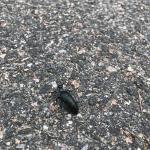
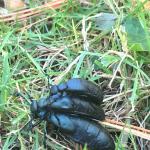 Blister Beetles: adult beetles in the Family Meloidae (Blister Beetles) have been reported in a few locations in Massachusetts in recent weeks. On November 3, 2021 an additional report of increased adult blister beetle activity was made from a cemetery in Weston, MA. These insects tend to gather in groups as adults and can be relatively large in size (1/2 to 1 inch in length) and certain species in the genus Meloe (also known as the oil beetles) can be very dark to deep iridescent blue in color. Beetles in this genus lack hind wings, and their elytra (hardened forewings) are greatly reduced in size. Beetles may feed on certain flowers and their pollen as adults, but some species have immature life stages that feed either on grasshopper eggs or immature ground nesting bees.
Blister Beetles: adult beetles in the Family Meloidae (Blister Beetles) have been reported in a few locations in Massachusetts in recent weeks. On November 3, 2021 an additional report of increased adult blister beetle activity was made from a cemetery in Weston, MA. These insects tend to gather in groups as adults and can be relatively large in size (1/2 to 1 inch in length) and certain species in the genus Meloe (also known as the oil beetles) can be very dark to deep iridescent blue in color. Beetles in this genus lack hind wings, and their elytra (hardened forewings) are greatly reduced in size. Beetles may feed on certain flowers and their pollen as adults, but some species have immature life stages that feed either on grasshopper eggs or immature ground nesting bees.
Blister beetles are native and a natural part of our ecosystems. The main caution that accompanies sharing your environment with blister beetles is that many species release a chemical called cantharidin when they are squished or otherwise harmed or feel threatened. This is a defense mechanism. Dermal exposure to cantharidin can lead to blisters or other irritation on the skin if you come into direct contact with the beetles and cause them to exude this substance. Blister beetles in hay may pose a concern to horses or other animals that consume contaminated hay. Consult a veterinarian with any concerns. Finally, make sure children know what they look like, and know to avoid handling them. They often are a bright/shiny blue color, and while this can be attractive and interesting, it is warning coloration. This is the beetle's way of telling you to stand back, don't touch!
- Deer Tick/Blacklegged Tick: Ixodes scapularis – Adult male and female deer ticks are active any time temperatures are above freezing from October through next May. So do not let your guard down, even though colder temperatures are upon us! For images of all deer tick life stages, along with an outline of the diseases they carry, and their timing of activity, visit: https://web.uri.edu/tickencounter/species/blacklegged-tick/ .
Anyone working in the yard and garden should be aware that there is the potential to encounter deer ticks. The deer tick or blacklegged tick can transmit Lyme disease, human babesiosis, human anaplasmosis, and other diseases. Preventative activities, such as daily tick checks, wearing appropriate clothing, and permethrin treatments for clothing (according to label instructions) can aid in reducing the risk that a tick will become attached to your body. If a tick cannot attach and feed, it will not transmit disease. For more information about personal protective measures, visit: https://web.uri.edu/tickencounter/prevention/protect-yourself/ . Check out the archived TickTalk with TickReport webinars available here: https://ag.umass.edu/landscape/education-events/webinars .
The Center for Agriculture, Food, and the Environment provides a list of potential tick identification and testing resources here: https://ag.umass.edu/resources/tick-testing-resources .
*Note that deer ticks (Ixodes scapularis) are not the only disease-causing tick species found in Massachusetts. The American dog tick (Dermacentor variabilis) and the lone star tick (Amblyomma americanum) are also found throughout MA. Each can carry their own complement of diseases, including others not mentioned above. Anyone working or playing in tick habitats (wood-line areas, forested areas, and landscaped areas with ground cover) should check themselves regularly for ticks while practicing preventative measures
Woody ornamental insect and non-insect arthropod pests to consider, a selected few:
Invasive Insects & Other Organisms Update:
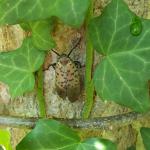
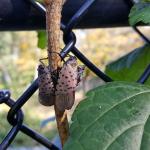
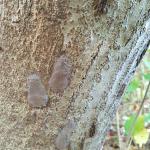
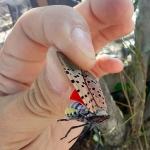
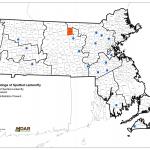 Spotted Lanternfly: (Lycorma delicatula, SLF) The MA Department of Agricultural Resources (MDAR) announced on September 28, 2021 that a small, established, and breeding population of the invasive spotted lanternfly (Lycorma delicatula) was detected in Worcester County, MA in the city of Fitchburg. This finding was confirmed by state officials.
Spotted Lanternfly: (Lycorma delicatula, SLF) The MA Department of Agricultural Resources (MDAR) announced on September 28, 2021 that a small, established, and breeding population of the invasive spotted lanternfly (Lycorma delicatula) was detected in Worcester County, MA in the city of Fitchburg. This finding was confirmed by state officials.
For further details regarding what is currently known about the population in Fitchburg, MA and MDAR’s response, visit the press release: https://www.mass.gov/news/state-agricultural-officials-discover-invasive-spotted-lanternfly-population-in-worcester-county
Residents and professionals living and working across the Commonwealth should learn the life stages of the spotted lanternfly and be able to identify their eggs, immatures, and adults. At this time, it is particularly valuable to learn how to ID spotted lanternfly adults and egg masses. Adults are present in areas where this insect is established until the first couple of hard frosts. If any life stages of this insect are found in Massachusetts, report them immediately here: https://massnrc.org/pests/slfreport.aspx .
Currently, the only established (breeding) population of spotted lanternfly in Massachusetts is in a small area of Fitchburg, MA. Therefore, there is no reason to be preemptively treating for this insect in other areas of Massachusetts at this time. If you suspect you have found spotted lanternfly in additional locations, please report it immediately to MDAR at the link provided above. If you are living and working in the Fitchburg area, please be vigilant and continue to report anything suspicious.
For More Information:
From UMass Extension:
*Check out the new InsectXaminer Episode about spotted lanternfly adults and egg masses! Available here: https://ag.umass.edu/landscape/education-events/insectxaminer
https://ag.umass.edu/landscape/fact-sheets/spotted-lanternfly
From the MA Department of Agricultural Resources:
https://massnrc.org/pests/pestFAQsheets/spottedlanternfly.html
Nursery Best Management Practices (January 2021)
Checklist for Residents in or near Infested Areas
Driver’s Checklist in English or Spanish (September 2021)
Moving Industry Checklist (February 2021)
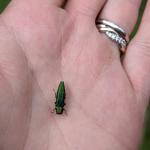 Emerald Ash Borer: (Agrilus planipennis, EAB) in 2021 alone, the Massachusetts Department of Conservation and Recreation has confirmed at least 28 new community detections of emerald ash borer in Massachusetts. To date, 11 out of the 14 counties in Massachusetts have confirmed emerald ash borer. (The remaining counties where EAB has yet to be detected are Barnstable, Dukes, and Nantucket counties.)A map of these locations and others previously known across the state may be found here: https://ag.umass.edu/fact-sheets/emerald-ash-borer .
Emerald Ash Borer: (Agrilus planipennis, EAB) in 2021 alone, the Massachusetts Department of Conservation and Recreation has confirmed at least 28 new community detections of emerald ash borer in Massachusetts. To date, 11 out of the 14 counties in Massachusetts have confirmed emerald ash borer. (The remaining counties where EAB has yet to be detected are Barnstable, Dukes, and Nantucket counties.)A map of these locations and others previously known across the state may be found here: https://ag.umass.edu/fact-sheets/emerald-ash-borer .
This wood-boring beetle readily attacks ash (Fraxinus spp.) including white, green, and black ash and has also been found developing in white fringe tree (Chionanthus virginicus) and has been reported in cultivated olive (Olea europaea). Signs of an EAB infested tree may include D-shaped exit holes in the bark (from adult emergence), “blonding” or lighter coloration of the ash bark from woodpecker feeding (chipping away of the bark as they search for larvae beneath), and serpentine galleries visible through splits in the bark, from larval feeding beneath. It is interesting to note that woodpeckers are capable of eating 30-95% of the emerald ash borer larvae found in a single tree (Murphy et al. 2018). Unfortunately, despite high predation rates, EAB populations continue to grow.
For further information about this insect, please visit: https://ag.umass.edu/fact-sheets/emerald-ash-borer . If you believe you have located EAB-infested ash trees, particularly in an area of Massachusetts not identified on the map provided, please report here: https://massnrc.org/pests/eabreport.htm .
- Asian Longhorned Beetle: (Anoplophora glabripennis, ALB) Look for signs of an ALB infestation which include perfectly round exit holes (about the size of a dime), shallow oval or round scars in the bark where a female has chewed an egg site, or sawdust-like frass (excrement) on the ground nearby host trees or caught in between branches. Be advised that other, native insects may create perfectly round exit holes or sawdust-like frass, which can be confused with signs of ALB activity.
The regulated area for Asian longhorned beetle is 110 miles2 encompassing Worcester, Shrewsbury, Boylston, West Boylston, and parts of Holden and Auburn. If you believe you have seen damage caused by this insect, such as exit holes or egg sites, on susceptible host trees like maple, please call the Asian Longhorned Beetle Eradication Program office in Worcester, MA at 508-852-8090 or toll free at 1-866-702-9938.
To report an Asian longhorned beetle find online or compare it to common insect look-alikes, visit: http://massnrc.org/pests/albreport.aspx or https://www.aphis.usda.gov/pests-diseases/alb/report .
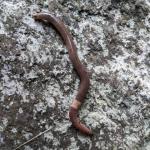
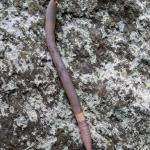 Jumping Worms: Amynthas spp. earthworms, collectively referred to as “jumping or crazy or snake” worms, overwinter as eggs in tiny, mustard-seed sized cocoons found in the soil or other substrate (ex. compost). Any remaining juvenile or adult jumping worms perish with the onset of cold temperatures. While some homeowners may elect to manually remove jumping worm adults (and juveniles) from their gardens, these life stages will soon be killed by frost and cold winter temperatures anyway. The tiny, impossible to remove cocoons will overwinter and provide a population of these earthworms next season.
Jumping Worms: Amynthas spp. earthworms, collectively referred to as “jumping or crazy or snake” worms, overwinter as eggs in tiny, mustard-seed sized cocoons found in the soil or other substrate (ex. compost). Any remaining juvenile or adult jumping worms perish with the onset of cold temperatures. While some homeowners may elect to manually remove jumping worm adults (and juveniles) from their gardens, these life stages will soon be killed by frost and cold winter temperatures anyway. The tiny, impossible to remove cocoons will overwinter and provide a population of these earthworms next season.
Don’t miss UMass Extension’s Jumping Worm Conference on January 26 and 27th! Register now: https://ag.umass.edu/landscape/events/jumping-worm-conference
For more information, listen to Dr. Olga Kostromytska’s presentation here: https://ag.umass.edu/landscape/education-events/invasive-insect-webinars
UMass Extension Fact Sheets:
Earthworms in Massachusetts – History, Concerns, and Benefits: https://ag.umass.edu/landscape/fact-sheets/earthworms-in-massachusetts-history-concerns-benefits
Jumping/Crazy/Snake Worms – Amynthas spp.:
https://ag.umass.edu/landscape/fact-sheets/jumpingcrazysnake-worms-amynthas-spp
Suggested reading includes Dr. Kostromytska’s recent “Hot Topics” article in Hort Notes (including an identification guide), here: https://ag.umass.edu/landscape/newsletters/hort-notes/hort-notes-2021-vol-323
Additional resources can also be found here:
University of Minnesota Extension: https://extension.umn.edu/identify-invasive-species/jumping-worms
Cornell Cooperative Extension: http://ulster.cce.cornell.edu/environment/invasive-pests/jumping-worm
UNH Extension: https://extension.unh.edu/blog/invasive-spotlight-jumping-worms
Tree & Shrub Insects & Mites:
*Note: The timing for the vast majority of chemical management options for insect pests of trees and shrubs has passed for this season. The following notes are seasonally appropriate, and many provide scouting tips for the winter in preparation for management options for next (2022) spring.
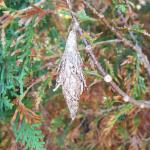
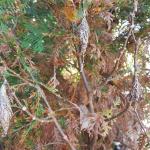 Bagworm: Thyridopteryx ephemeraeformis is a native species of moth whose larvae construct bag-like coverings over themselves with host plant leaves and twigs as they feed on plant foliage. At this time, bagworms have finished feeding, developed into adults, mated, and have likely perished for the season. Bagworm eggs overwinter in the bags created by the females of this season. A great mechanical management option for this insect over the winter is to remove/prune out any egg-containing bags from infested host plants. This will help reduce the number of bagworms present on the plant next season.
Bagworm: Thyridopteryx ephemeraeformis is a native species of moth whose larvae construct bag-like coverings over themselves with host plant leaves and twigs as they feed on plant foliage. At this time, bagworms have finished feeding, developed into adults, mated, and have likely perished for the season. Bagworm eggs overwinter in the bags created by the females of this season. A great mechanical management option for this insect over the winter is to remove/prune out any egg-containing bags from infested host plants. This will help reduce the number of bagworms present on the plant next season.- Cooley Spruce Gall Adelgid: Adelges cooleyi overwinters at the base of host plant needles (Colorado blue, Engelmann, and other spruces) below buds and are covered in a white-waxy material. If this life stage is seen, plan to scout for and remove green, elongated, pineapple-shaped galls from the end of new growth next spring. Plan to do this before galls turn brown and open (usually by July). Dormant oils can also be planned for the overwintering nymphs before galls form and when temperatures allow, early next spring. Follow all label instructions for safety and proper use. Note that on Douglas fir, dormant oil applications may result in yellowing of foliage. This insect does not produce galls on Douglas fir, but may result in crooked/twisted needles from adelgid feeding.
- Eastern and Forest Tent Caterpillars: Malacosoma americanum and Malacosoma disstria both overwinter as ½ to 2 inch long egg masses which encircle the twigs of their host plants (eastern tent caterpillar: wild cherry, crabapple, apple; forest tent caterpillar: oak, sugar maple, poplar, birch, etc.). These shiny, dark colored egg masses can be pruned from these host plants and destroyed over the winter, to prevent caterpillar hatch next spring.
- Eastern Spruce Gall Adelgid: Adelges abietis overwinters as white, wax-covered nymphs at the base of needles on Norway spruce, but also white, red, and blue spruce. Dormant oil applications may be made on plant terminals early next spring to kill overwintering nymphs. Follow all label instructions for safety and proper use. Plan to prune out and destroy any green, newly developing galls next spring before the insects inside emerge.
- Fall Home-Invading Insects: Various insects, such as ladybugs, boxelder bugs, seedbugs, and stink bugs have already found overwintering shelters in warm places, such as homes, particularly on the remaining warm/sunny days. While such invaders do not cause any structural damage to the home, they can become a nuisance especially when they are present in large numbers. Once they’ve entered the home, they are easy to clean up with a vacuum. Just be sure to empty the vacuum following each use. Chemical management of these insects inside the home is not recommended and is not necessary in the vast majority of cases.
- Hemlock Woolly Adelgid: Adelges tsugae is a bit unique in the sense that this insect does much of its feeding on hemlock hosts over the winter, rather than during the growing season. In mid-October, hemlock woolly adelgid nymphs (which are very difficult to see at the base of hemlock needles) began feeding again. Over the winter, they will continue to feed and develop into adults, which typically produce egg masses again in March. As this development and egg laying occurs, the adelgids produce the white, waxy, woolly material around themselves which becomes easily detectible. This makes the insects look like tiny cotton balls lined up at the base of hemlock needles. While the timing for chemical management options for this insect has passed for this season, dormant oil applications can be planned, as necessary, for next March/April. Do not apply dormant oils when hemlock buds are open, or when freezing temperatures are expected. Follow all label instructions for safety and proper use.
- Honeylocust Mite: Platytetranychus multidigitali overwinters as bright orange adults that are approximately 1 mm long. These orange colored mites can be found in bud scars and cracks in the bark of their namesake host, Gleditsia triacanthos. Over the winter, host plants can be scouted using a 10X hand lens to find mites overwintering in these locations. This information can be used to plan management options for next spring, such as dormant oil applications targeting the overwintered adults. Follow all label instructions for safety and proper use.
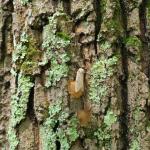 Lymantria dispar: formerly known as gypsy moth, Lymantria dispar egg masses will be seen overwintering on just about any flat surface, including host plants such as oak, but also fencing, buildings, steps, outdoor furniture, etc. The winter is a good time to scout properties, particularly in areas of Berkshire County, MA that experienced elevated L. dispar populations in 2021. If large numbers of egg masses are seen, create a plan over the winter to protect susceptible specimen trees and shrubs from caterpillars next spring in the event that caterpillar activity is elevated again.
Lymantria dispar: formerly known as gypsy moth, Lymantria dispar egg masses will be seen overwintering on just about any flat surface, including host plants such as oak, but also fencing, buildings, steps, outdoor furniture, etc. The winter is a good time to scout properties, particularly in areas of Berkshire County, MA that experienced elevated L. dispar populations in 2021. If large numbers of egg masses are seen, create a plan over the winter to protect susceptible specimen trees and shrubs from caterpillars next spring in the event that caterpillar activity is elevated again.- Magnolia Scale: Neolecanium cornuparvum overwinters as immature scales that are dark in color, found on the twigs of susceptible magnolias. During the dormant winter season, scout trees that are known to have problems with this native soft scale and look at 1 to 2-year old twigs for overwintering crawlers that are approximately 1/16th of an inch in length. If found, plan for dormant oil applications next spring, targeting these locations. Follow all label instructions for safety and proper use. *Note – the winter is a good time to scout for overwintering life stages of many different scale insects on many different host plants. Be sure to bring a 10X hand lens to assist you.
- Viburnum Leaf Beetle: Pyrrhalta viburni is a beetle in the family Chrysomelidae that is native to Europe, but was found in Massachusetts in 2004. This beetle feeds exclusively on many different species of viburnum, which includes, but is not limited to, susceptible plants such as V. dentatum, V. nudum, V. opulus, V. propinquum, and V. rafinesquianum. Some viburnum have been observed to have varying levels of resistance to this insect, including but not limited to V. bodnantense, V. carlesii, V. davidii, V. plicatum, V. rhytidophyllum, V. setigerum, and V. sieboldii. Viburnum leaf beetles overwinter as eggs laid in pits chewed near the tips of twigs on susceptible hosts. A great mechanical management option for reducing next season’s viburnum leaf beetle population is to prune out over wintering egg sites and dispose of them. Do this after several hard frosts to ensure that any lingering viburnum leaf beetle adults from this season have been killed by cold temperatures. More information about viburnum leaf beetle may be found at http://www.hort.cornell.edu/vlb/ .
Concerned that you may have found an invasive insect or suspicious damage caused by one? Need to report a pest sighting? If so, please visit the Massachusetts Introduced Pests Outreach Project: http://massnrc.org/pests/pestreports.htm .
Reported by Tawny Simisky, Extension Entomologist, UMass Extension Landscape, Nursery, & Urban Forestry Program
Additional Resources
Pesticide License Exams - The MA Dept. of Agricultural Resources (MDAR) is now holding exams online. For more information and how to register, go to: https://www.mass.gov/pesticide-examination-and-licensing.
To receive immediate notification when the next Landscape Message update is posted, join our e-mail list or follow us on Facebook.
For a complete listing of upcoming events, see our upcoming educational events https://ag.umass.edu/landscape/upcoming-events
For commercial growers of greenhouse crops and flowers - Check out UMass Extension's Greenhouse Update website
For professional turf managers - Check out Turf Management Updates
For home gardeners and garden retailers - Check out our home lawn and garden resources.
Diagnostic Services
UMass Laboratory Diagnoses Landscape and Turf Problems - The UMass Extension Plant Diagnostic Lab is available to serve commercial landscape contractors, turf managers, arborists, nurseries and other green industry professionals. It provides woody plant and turf disease analysis, woody plant and turf insect identification, turfgrass identification, weed identification, and offers a report of pest management strategies that are research based, economically sound and environmentally appropriate for the situation. Accurate diagnosis for a turf or landscape problem can often eliminate or reduce the need for pesticide use. For sampling procedures, detailed submission instructions and a list of fees, see Plant Diagnostic Laboratory
Soil and Plant Nutrient Testing - The University of Massachusetts Soil and Plant Nutrient Testing Laboratory is located on the campus of The University of Massachusetts at Amherst. Testing services are available to all. The lab provides test results and recommendations that lead to the wise and economical use of soils and soil amendments. For more information, visit the UMass Soil and Plant Nutrient Testing Laboratory web site. The lab is currently accepting new orders for Routine Soil Analysis (including optional Organic Matter, Soluble Salts, and Nitrate testing), Particle Size Analysis, Pre-Sidedress Nitrate (PSNT), and Soilless Media (no other types of soil analyses available at this time). Turnaround time: Please plan for the fact that date of receipt in the lab is affected by weekends, holidays, shipping time, and time for UMass Campus Mail to deliver samples to the lab.
Tick Testing - The UMass Center for Agriculture, Food, and the Environment provides a list of potential tick identification and testing options at: https://ag.umass.edu/resources/tick-testing-resources.
UMass Extension gratefully acknowledges the ongoing support of the MA Nursery and Landscape Association Fund in providing funding for a portion of the staff time required to publish the Landscape Message.